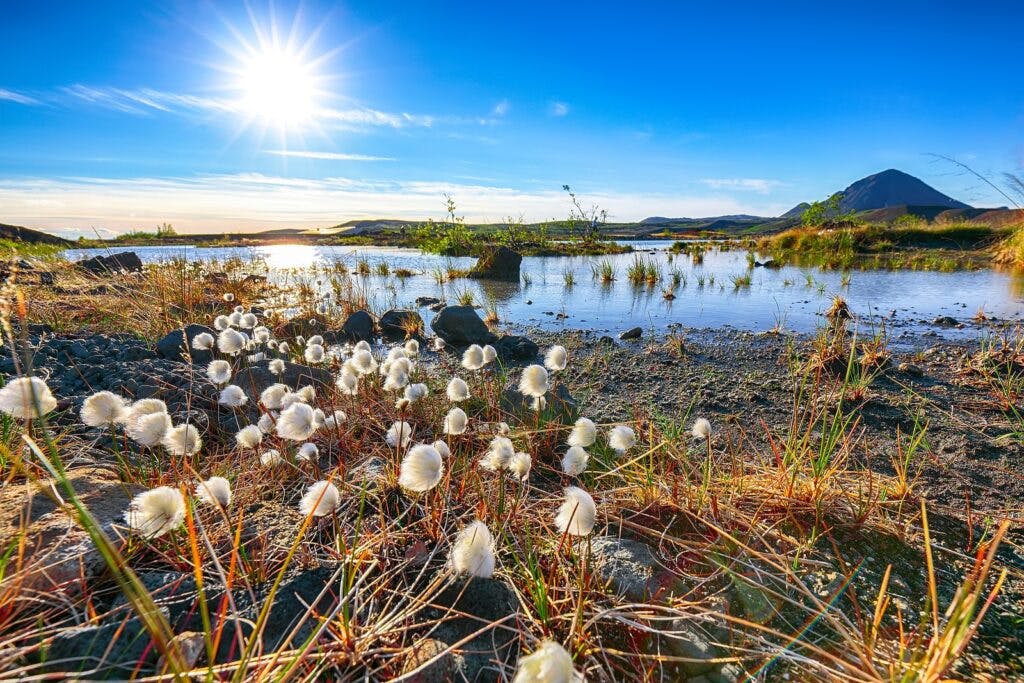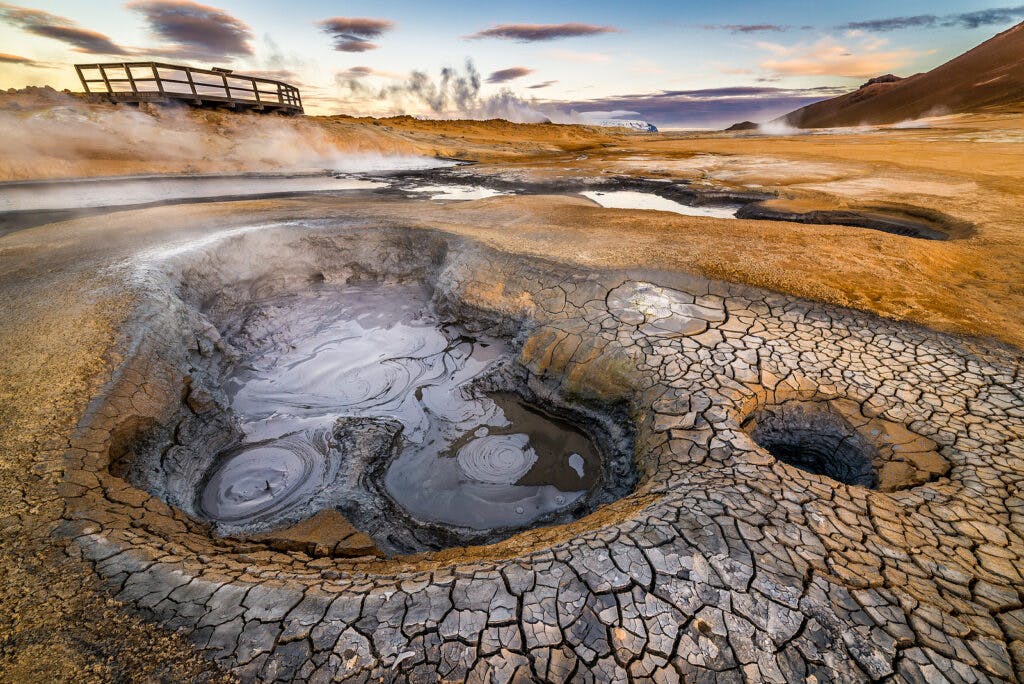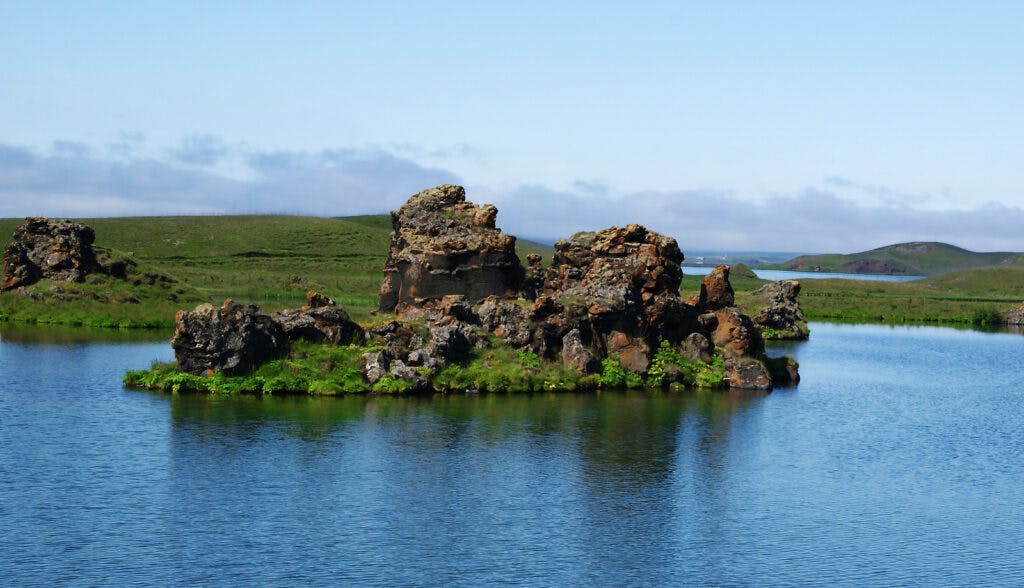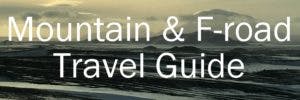May 6, 2025
Lake Mývatn Travel Guide
Not everybody who visits Iceland wants to drive around the Ring Road and try to see as much as possible. Some prefer to stay put in one area and explore the surroundings at their own pace. Destinations like Snæfellsnes, Westfjords, and the area around Lake Mývatn are places where more and more people are looking to stay for longer periods. For those who are interested in staying in and around Lake Mývatn, we have prepared a travel guide so you’ll know what to look out for.

Camping sites

Hot Springs

Crossroads

Places of Interest

Swimming Pool
Lake Mývatn Geology
Lake Mývatn is Iceland’s 4th biggest lake, with an area of 36.5 km²/14.1 miles², but is very shallow with the deepest part being 4.5 m/14 ft. The lake runs out into the river Láxá í Mývatnssveit which is one of the finest Brown trout rivers in the world. The abundance of other fauna, such as Arctic char, and the many breeding duck species (15-16) make the area famous among wildlife fanatics. Amazing geological formations and a huge variety of landscapes can be found around the lake’s edge. Another aspect of the area’s fame is that it’s known for its volcanic activity - in fact, the 9-year period from 1975 saw 9 eruptions take place, and continental drift was measured at 4.8 m as a result. You’ll find many attractions nearby that depict just how volcanic Iceland can be. For example, Hverarönd is constantly bubbling and steaming, an amazing place to visit.
Things To Know Before Visiting
This area is one of the coldest places in the country during winter but also boasts fantastic summers. For those visiting in summer, you should be prepared for the clouds of midges that can descend. While they don’t stay for long, it can make the area where they are quite unpleasant. They should disappear within a few minutes, but wearing glasses and covering your mouth will make it far more bearable while enjoying nearby natural wonders. Make sure you carry insect repellent (apparently the electronic ones work like a charm) and something to take care of those irritating little bites if you do get bitten.

How to Get to Lake Mývatn
If you are driving to Lake Mývatn, the shortest route to take is to head north on the Ring Road. It’s 479 km/297.6 miles and will take you about 6 hours to get there from the capital without any stops. In reality, the journey is best experienced over a longer period, with stops for refreshments, at other attractions, and to take pictures. The Ring Road is paved all the way to Mývatn.
If you want to drive the longer way, heading east from Reykjavík along the Ring Road, it will be 803 km/499 miles or ten hours of nonstop driving.
Where to Stay Near Lake Mývatn
There are three campsites directly by the lake (see map above) and a few hotels too. Hlíð Camping is the only campsite open all year round. Bjarg campsite lies by the water and has a fantastic view over the lake. If you do choose to stay by the lake, you’ll have a wide range of great places to visit just a short drive away.
Should these sites be full, there are several locations slightly further from the lake’s shores. What’s more, you can also choose to stay in Ásbyrgi or Vesturdalur, incredible places to both visit and stay in. All campsites have all the amenities you need, like showers and such, except Vesturdalur, which only has toilets.
In the small village of Reykjahlíð, you’ll find a supermarket, a gas station, a post office, and even a restaurant. If you’d like to sample a pizza, head to nearby Vogar, the village south of Reykjahlíð.Ready to book a camper? Secure yours today

Things To Do Near Lake Mývatn
There are, of course, too many things to do in and around the lake for us to outline but here are a few things not to miss out on during your time at Lake Mývatn.
- Hike up the 524m/1719ft high mountain Vindbelgur and enjoy the tremendous view.
- Enjoy a leisurely drive around the lake or rent a bike from Reykjahlíð and cycle around it. It’s about 38km/23.6 miles around the lake.
- Taste the traditional Hverabrauð, a very dark bread baked in geothermal heat. Delicious with smoked fish.
- Visit Sigurgeir´s Bird Museum.
- Enjoy a sightseeing flight from the local airport in Reykjahlíð.
- Hiking on the numerous trails found in the vicinity and beyond.
Unfortunately, fishing in the river fed by Lake Mývatn is not for everyone, despite it being one of the best Brown trout rivers in the world. You need to order your license the year before but the chances of receiving one are very slim unless you are a member of the fishing club owning the rights.
When you are driving around in these areas, make sure you park properly when you want to take pictures. There are other cars around and you might put them in jeopardy by stopping in the middle of the road. Going north from the Ring Road might mean rough terrain at times so make sure to drive carefully when on Icelandic roads. During winter some roads might be closed so check out Road.is before heading off to find out what the road conditions are.

Nearby Attractions
If you are planning on spending a lot of time in the area, you might want to diversify the types of natural attractions you visit. Here are a few locations well worth adding to any road trip to the area, helping you to get a real taste of all the elements of Iceland’s wilderness.
- Hverfjall Crater - also known as Hverfell, is a tephra cone or tuff ring volcano that erupted 2,500 years ago.
- Dimmuborgir Rock Formations - a massive lava tube that collapsed some 2,300 years ago.
- Námaskarð & Hverir Geothermal Area - a surreal area with holes bubbling and sizzling and the smell of Sulfur lies thick over the area.
- Viti Crater - The crater Viti (Viti = hell) was created in a very violent fashion in 1724 when Magma exploded and created this 300 m/1,000 ft big hole.
- Dettifoss Waterfall - Dettifoss has the biggest volume of water of any waterfall in Europe.
- Hljóðaklettar Rock Formations - This area is full of the most bizarre and amazing lava formations.
- Goðafoss Waterfall - Goðafoss is around 12 m/39.4 ft high and 30 m/98.5 ft wide and the fall is fed by the river Skjálfandafljót.
A trip to Lake Mývatn makes it well worth renting a car in Iceland. You can head straight there from the airport, or spend a day or two exploring the capital city before taking your onward journey. We guarantee you won’t be short of things to do - in fact, you might even need to come back! Find your perfect rental car with us today.
Safe Travels! #GoIceland
ICELAND TRAVEL GUIDES



If you like what you see, feel free to subscribe to our YouTube channel!

